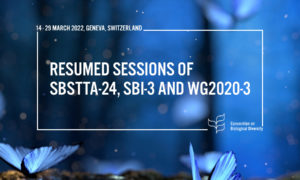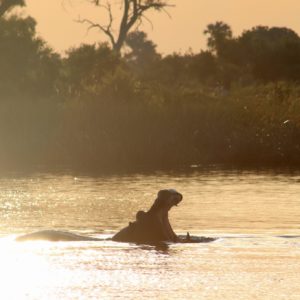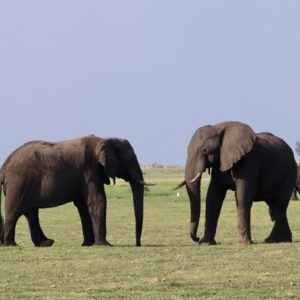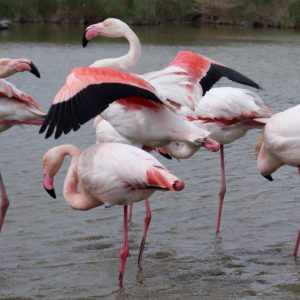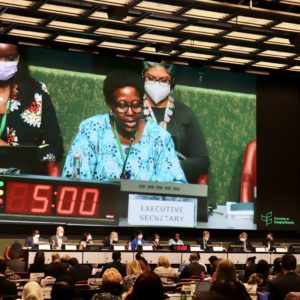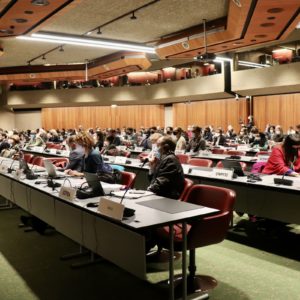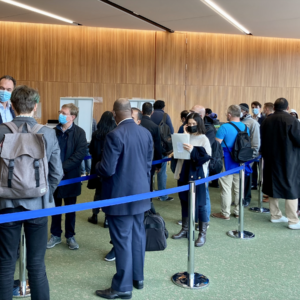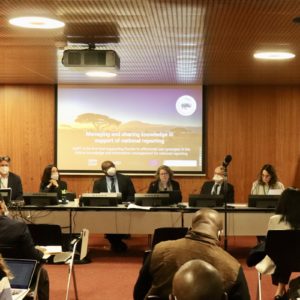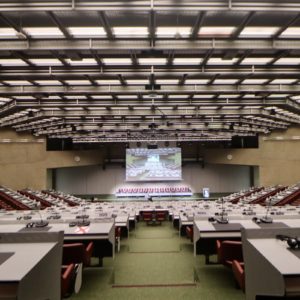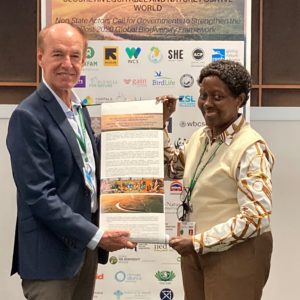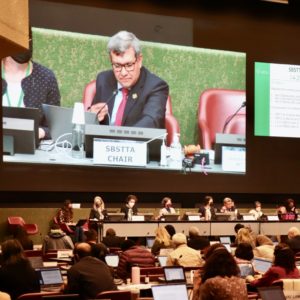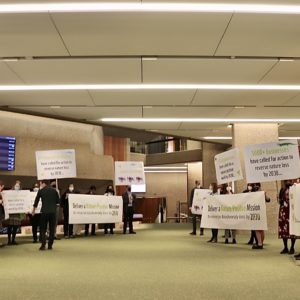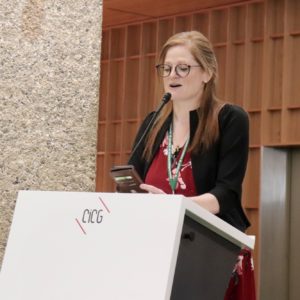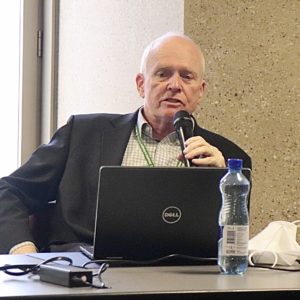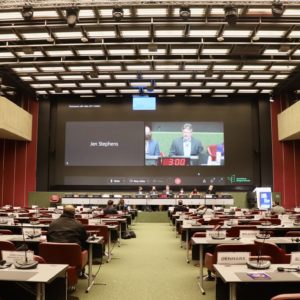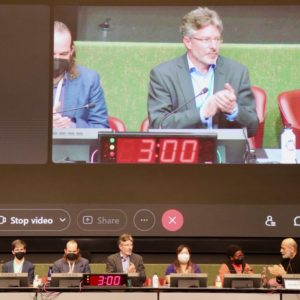Nouvelle
Towards the Convention of Biological Diversity Resumed Sessions of SBSTTA-24, SBI-3 and WG2020-3
About the Convention on Biological Diversity
The Convention on Biological Diversity (CBD) opened for signature in 1992 at the Earth Summit in Rio de Janeiro and entered into force in December 1993. The CBD is an international treaty for the conservation of biodiversity, the sustainable use of the components of biodiversity and the equitable sharing of the benefits derived from the use of genetic resources. With 196 Parties, the CBD has near universal participation among countries. The CBD seeks to address all threats to biodiversity and ecosystem services, including threats from climate change, through scientific assessments, the development of tools, incentives and processes, the transfer of technologies and good practices and the full and active involvement of relevant stakeholders including indigenous peoples and local communities, youth, women, NGOs, sub-national actors and the business community. The Cartagena Protocol on Biosafety and the Nagoya Protocol on Access and Benefit-Sharing are supplementary agreements to the CBD. The Cartagena Protocol, which entered into force 11 September 2003, seeks to protect biodiversity from the potential risks posed by living modified organisms resulting from modern biotechnology. To date, 173 Parties have ratified the Cartagena Protocol. The Nagoya Protocol aims at sharing the benefits arising from the utilization of genetic resources in a fair and equitable way, including by appropriate access to genetic resources and by appropriate transfer of relevant technologies. Entering into force 12 October 2014, it has been ratified by 132 Parties.
Convention Bodies
The Convention on Biological Diversity provides a global legal framework for action on biodiversity. It brings together the Parties in the Conference of the Parties (COP), which is the Convention’s governing body that meets every two years, or as needed, to review progress in the implementation of the Convention, to adopt programmes of work, to achieve its objectives and provide policy guidance.
The COP is assisted by the Subsidiary Body on Scientific, Technical, and Technological Advice, (SBSTTA), and the Subsidiary Body on Implementation (SBI). SBSTTA is established under the Convention (Article 25) and is made up of government representatives with expertise in relevant fields, as well as observers from non-Party governments, the scientific community, indigenous peoples and local communities, and other relevant organizations. SBSTTA is responsible for providing recommendations to the COP on the technical and scientific aspects of the implementation of the Convention.
The Subsidiary Body on Implementation is established by the decision of the COP to undertake review of progress in implementing the Convention and identifies strategic actions to enhance implementation, including how to strengthen the means of implementation. It also addresses issues associated with the operations of the convention and the Protocols.
The COP also establishes other subsidiary bodies in the form of working groups, from time to time, with responsibility to deal with specific issues as they arise. These subsidiary bodies are characterized as “ad hoc” because they are established for a limited and specific mandate and period and are generally open for participation by all Parties as well as observers.
UN Biodiversity Conference
The UN Biodiversity Conference comprises the 15th meeting of the Conference of the Parties (COP 15) to the Convention on Biological Diversity (CBD), the tenth Meeting of the Parties to the Cartagena Protocol on Biosafety (CP 10), and the fourth Meeting of the Parties to the Nagoya Protocol on Access and Benefit-sharing (NP MOP 4). Originally scheduled for October 2020, the Conference has been rescheduled in two segments. The first part of the meetings took place from 11 to 15 October 2021, with the second part reconvening in face-to-face meetings in Kunming, China later in 2022.
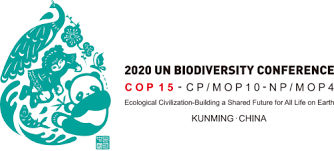
With the participation of almost 2,918 delegates in Kunming, and 2,478 connecting online, part one of the UN Biodiversity Conference set the stage for the adoption of an effective post-2020 global biodiversity framework at the resumption of the meeting in Spring 2022. The conference’s two-day High-Level Segment opened with the announcement by Chinese President Xi Jinping of the 1.5 billion-yuan (about $233 million) Kunming Biodiversity Fund, saw the adoption of the Kunming Declaration, where Parties to the Convention on Biological Diversity committed to negotiate an effective post-2020 global biodiversity framework.
Post-2020 Global Biodiversity Framework
Currently a work in progress, the Post 2020 Global Biodiversity Framework will ultimately advance to UN Convention on Biological Diversity’s COP-15 for consideration by 196 member Parties. Since early 2019, consultation workshops and meetings involving all stakeholders have been organized at the national, regional, and global levels, and they will continue during the resumed meetings in Geneva. The framework includes 21 targets for 2030 that call for, among other things:
- At least 30% of land and sea areas global (especially areas of particular importance for biodiversity and its contributions to people) conserved through effective, equitably managed, ecologically representative and well-connected systems of protected areas (and other effective area-based conservation measures)
- A 50% of greater reduction in the rate of introduction of invasive alien species, and controls or eradication of such species to eliminate or reduce their impacts
- Reducing nutrients lost to the environment by at least half, and pesticides by at least two thirds, and eliminating the discharge of plastic waste
- Nature-based contributions to global climate change mitigation efforts of least 10 GtCO2e per year, and that all mitigation and adaptation efforts avoid negative impacts on biodiversity
- Redirecting, repurposing, reforming or eliminating incentives harmful for biodiversity, in a just and equitable way, reducing them by at least $US 500 billion per year
- A $US 200 billion increase in international financial flows from all sources to developing countries.
More than two years in development, the Framework will undergo further refinement during online negotiations in late summer before being presented for consideration at CBD’s next meeting of its 196 parties at COP-15 (fifteenth meeting of the Conference of the Parties to the CBD), scheduled for Kunming, China.
The Four Goals for 2050:
The draft framework proposes four goals to achieve, by 2050, humanity “living in harmony with nature,” a vision adopted by the CBD’s 196 member parties in 2010.
- Goal A: The integrity of all ecosystems is enhanced, with an increase of at least 15% in the area, connectivity and integrity of natural ecosystems, supporting healthy and resilient populations of all species, the rate of extinctions has been reduced at least tenfold, and the risk of species extinctions across all taxonomic and functional groups, is halved, and genetic diversity of wild and domesticated species is safeguarded, with at least 90% of genetic diversity within all species maintained.
- Goal B: Nature’s contributions to people have been valued, maintained or enhanced through conservation and sustainable use supporting the global development agenda for the benefit of all;
- Goal C: The benefits from the utilization of genetic resources are shared fairly and equitably, with a substantial increase in both monetary and non-monetary benefits shared, including for the conservation and sustainable use of biodiversity.
- Goal D: The gap between available financial and other means of implementation, and those necessary to achieve the 2050 Vision, is closed.
After the Geneva Meetings, the Convention on Biological Diversity has announced dates for a fourth meeting of the Open-ended Working Group on the Post-2020 Global Biodiversity Framework to take place from 21-26 June 2022 in Nairobi, Kenya. This meeting will advance work ahead of the second part of the COP15.
Resumed Meetings in Geneva
Originally scheduled in Geneva in January 2022, the physical meetings of the resumed sessions of the twenty-fourth meeting of the Subsidiary Body on Scientific, Technical and Technological Advice (SBSTTA-24), the third meeting of the Subsidiary Body on Implementation (SBI-3) and the Open-ended Working Group on the Post-2020 Global Biodiversity Framework (WG2020-3) took place from 14 to 29 March 2022, preceded by the Regional and other Group meetings on 13 March. The registration deadline was 28 February.
The two subsidiary bodies held the first parts of their current meetings (SBSTTA-24 and SBI-3) virtually in May and June 2021. The first part of WG2020-3 took place virtually from 23 August-3 September 2021.
Venue
The meetings took place at the International Conference Centre Geneva (CICG).
Live and Daily Coverage
The Earth Negotiations Bulletin provided daily coverage of the meetings.
The plenaries could be followed live on the CBD website.
Geneva Preparatory Meetings
Various events convened or co-convened by the Geneva Environment Network focused on the negotiations on the Post-2020 Global Biodiversity Framework and the preparations for the United Nations Biodiversity Conference.
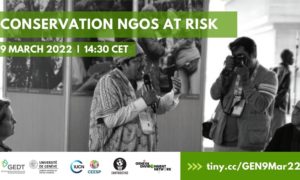
Conservation NGOs at Risk
IUCN CESSP, University of Geneva & Geneva Environment Network | 9 March 2022
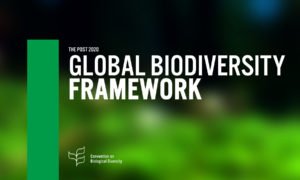
Briefing on the CBD Resumed Sessions of SBSTTA-24, SBI-3 and WG2020-3
Geneva Environment Network | 22 February 2022
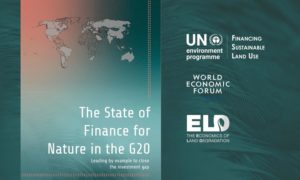
G20: Financing Nature-based Solutions
UNEP Climate Finance Unit & Geneva Environment Network | 27 January 2022
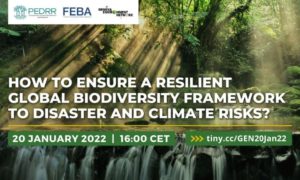
How to Ensure a Resilient Global Biodiversity Framework to Disaster and Climate Risks?
Geneva Environment Network, PEDRR & FEBA | 20 January 2022

How Can We Better Protect and Promote Human Rights in the Post-2020 Global Biodiversity Framework? | High-Level Panel
Forest Peoples Programme, Swedbio, IIFB, GYBN, IUCN, Women 4 Biodiversity, & Geneva Environment Network | 8 December 2021

Executive Briefing on the United Nations Biodiversity Conference
Geneva Environment Network | 2 November 2021
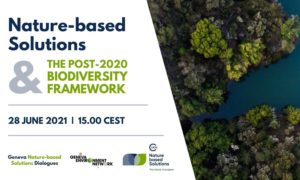
Nature-based Solutions and the Post-2020 Biodiversity Framework | Geneva Nature-based Solutions Dialogues
IUCN & Geneva Environment Network | 28 June 2021
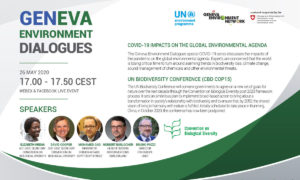
GENeva Environment Dialogues | UN Biodiversity Conference (CBD COP15)
Geneva Environment Network | 16 May 2020
Side Events to the Resumed Meetings
All the relevant information on the side events was available on the CBD website. The side events supported or co-organized by the Geneva Environment Network are listed here.
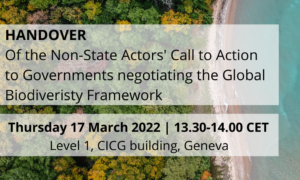
Official Handover of the Non-State Actors’ Nature Positive Call to Action to Governments Negotiating the Global Biodiversity Framework
WWF | 17 March 2022, 13:30–14:00 CET | CICG Level 1

CBD Side Event | How can the new Global Biodiversity Framework (GBF) be a tool for strengthening rights-based forest protection and increased funding for indigenous peoples?
Forest Peoples Programme, Norway, Rainforest Foundation Norway | 18 March 2022, 13:15–14:45 CET | CICG A, B, C & Online

CBD Side Event | Applying a Human Rights-based Approach in the Post-2020 Global Biodiversity Framework
SwedBio at SRC, FPP, GYBN, ICCA Consortium, IIFB, W4B, UNEP, WWF, Natural Justice, OHCHR, CBD & Geneva Environment Network | 19 March 2022, 13:15–14:45 CET | CICG A, B, C & Online
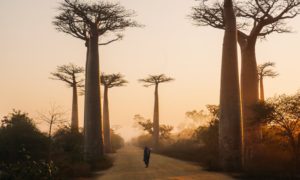
CBD Side Event | Integrating Human Rights in the Future of Biodiversity Action
OHCHR | 22 March 2022, 13:15–14:45 CET | CICG Room D & Online

CBD Side Event | Chemicals, Wastes and Biodiversity
BRS MEAs, Minamata Convention, CBD & Geneva Environment Network | 27 March 2022, 13:15–14:45 CEST | CICG Room 14 & Online
Non-State Actors’ Nature Positive Call to Action
Geneva and the Convention on Biological Diversity
In May 1993, the UNEP Governing Council established the Intergovernmental Committee on the Convention on Biological Diversity (ICCBD) to prepare for the first meeting of the Conference of the Parties and to ensure the effective operation of the Convention upon its entry into force. In just two meetings the ICCBD was able to address the key issues required for preparation for the first meeting of the Conference of the Parties.
Geneva hosted the first meeting of the ICCBD from 11-15 October 1993, and became the first home of the Secretariat in 1993, until a successful bid was made by the Government of Canada and the Province of Québec to relocate the Secretariat to Montreal in 1996, where it presently remains.
Learning

Introductory Course to the Convention on Biological Diversity (CBD)
Online | InforMEA

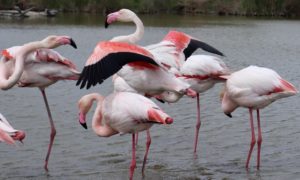
Introductory Course to Cartagena Protocol on Biosafety
Online | InforMEA
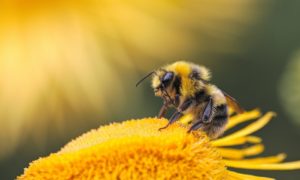
Communicating the Value of Biodiversity
Online | CBD, UNDP, NBSAP Forum, and Rare
Resources
General
Resources on the UN Biodiversity Conference, processes, documents, positions and calls to action.
- UN Biodiversity Conference
- Press Release | Convention on Biological Diversity | 29 March 2022
- First Draft of The Post-2020 Global Biodiversity Framework
- Report: UN Biodiversity Conference Part I | IISD | 11-15 October 2021
- IUCN Position paper resumed sessions CBD SBSTTA24-SBI3-OEWG3 | IUCN
- WWF reaction to the adoption of the Kunming Declaration at COP15 | 13 October 2021
- Non-State Actors’ Call to Secure an Ambitious Global Biodiversity Agreement
- What really happened at Geneva’s crucial biodiversity negotiations? | The Guardian | 2 April 2022
Human Rights
All human beings depend on the environment in which we live. A safe, clean, healthy and sustainable environment is integral to the full enjoyment of a wide range of human rights. Protecting human rights protects the environment
- Applying a human rights-based approach. Guidance on the application of a human rights-based approach in the post-2020 Global Biodiversity Framework | CBD Human Rights in Biodiversity Working Group (FPP, CBD Alliance, GYBN, ICCA Consortium, Natural Justice, SwedBio, Tebtebba Foundation, WWF, Friends of the Earth International, CBD Women’s Caucus and Women4Biodiversity)
- How to Integrate Human Rights into Biodiversity Conservation in the post-2020 Global Biodiversity Framework | SwedBio
- The Escazú Agreement, Human Rights and Healthy Ecosystems Dialogue Series | UNDP | 2022
- Local Biodiversity Outlooks 2 | Forest Peoples Programme, in collaboration with: Centres of Distinction on Indigenous and Local Knowledge, Indigenous Women’s Biodiversity Network, International Indigenous Forum on Biodiversity, and Secretariat of the Convention on Biological Diversity.
Gender
The importance of gender equality for a sustainable future has been established in Sustainable Development Goal 5 – Achieve gender equality and empower all women and girls. However, it is not a stand-alone objective; rather, gender equality is important for the achievement of other global goals, including those related to environmental challenges.
- Advancing Women’s Rights, Gender Equality and the Future of Biodiversity in the Post-2020 Global Biodiversity Framework | Women4Biodiversity | December 2021
- Best Practices in Gender and Biodiversity | UNEP and CBD
Disaster Risk Reduction
The choices we make are creating new, emerging and larger risks. With increasing complexity and interaction between human, economic and political systems, the risk becomes increasingly systemic.
- PEDRR/FEBA Recommendations based on the 1st draft of the Global Biodiversity Framework (GBF) | PEDRR | 1 November 2021
Health
Biodiversity and healthy ecosystems are essential for our health and survival. A healthy environment, with thriving biodiversity and in ecological equilibrium, is integral to social and ecological resilience, including the resilience of ecosystem functions and the services that they sustain.
- Provisions to reduce the risk of future pandemics of zoonotic origins in the post-2020 Global Biodiversity Framework | Coalition for Preventing Pandemics at the Source (Conservation International, WWF, Wildlife Conservation Society, Rainforest Alliance, World Resource Institute, the Jane Goodall Institute, IFAW, Management Science for Health, EcoHealth Alliance, Health in Harmony, Right to Health Action, PIVOT, Marked by Covid, INCT EECBio, The Tenure Facility, Dalberg Catalyst).
Cities and Subnational Governments
Over the last decades, cities have emerged as the world’s economic platforms for production, innovation and trade, providing opportunities for poverty alleviation and improvement of quality of life. However, urbanization is also a driving force of environmental degradation and its associated impacts on human health and livelihoods.
- Engaging subnational governments, cities and other local authorities on biodiversity matters | ICLEI & Geneva Cities Hub | 17 March 2022
- CitiesWithNature
Business and Finance
Achieving the Post 2020 Global Biodiversity Framework and the Sustainable Development Goals will require a significant shift in financial flows toward sustainable economic activities.
- Business and Finance guides to the UN Convention on Biological Diversity (CBD) | Business for Nature | 2021
- Business for Nature’s Call to Action
Others
- Local Biodiversity Outlooks | Forest Peoples Programme | 2022
- Joint NGO statement on state of play in the UN Convention on Biological Diversity (CBD) negotiations | Nature4Climate
- Biodiversity and Sustainable Development | Nexus Brief
- Saving Biodiversity | Heinrich Böll Stiftung | Brussels office – European Union | 12 October 2021
- Sustainability standards are a powerful tool to protect biodiversity | UNCTAD | 24 January 2022
- Interlinkages between the Chemicals and Waste Multilateral Environmental Agreements and Biodiversity: Key Insights | Secretariats of the Basel, Rotterdam, Stockholm Conventions (BRS), and the Minamata Convention on Mercury (MC) | May 2021
- COP15: Key outcomes for nature loss and climate change from UN talks in Geneva | Carbon Brief | 31 March 2022
Geneva
This section highlights the role that local Geneva plays in biodiversity topics.
- Biodiversity and Geneva | Geneva Environment Network (regularly updated)

